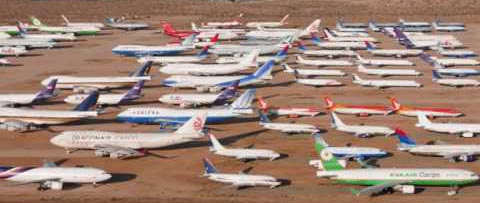ABU DHABI: A phenomenal growth in air travel is leading to severe airspace
congestion and likely environmental disasters due to alarming carbon emissions.
Urgent measures are needed to be taken to improve matters, it was brought to
light at the IATA Middle East Aviation Day in Abu Dhabi last week.
The emerging challenge is to increase the overall efficiency of the air traffic
management (ATM) system through improved airspace design and organization.
Collaboration among aviation stakeholders is essential to resolve the issues at
sttake. The Governments need to help bring about the necessary technological
changes.

With passenger traffic set to more than double over the next 20 years, the
aviation industry is facing greater pressure to implement environmental solutions.
The industry has a target of achieving carbon-neutral growth by 2020. However, a
50% emission reduction is stated to be possible only by 2050, in comparison with
the level of 2005.
The industry is chalking out a four-pronged plan such as new technology, improved
operations, better use of infrastructure (which are already showing results)
and a global offsetting scheme to drive carbon reductions, an initiative the
governments need to deliver.
“In September next year, the International Civil Aviation Organization (ICAO)
Assembly will make its decision on an MBM (market-based measure). In the hands
of 190 states will be the power to make aviation’s carbon-neutral growth goal a
reality. The stakes are high and I call on all governments in the region, and all
aviation stakeholders, to remain united behind this vision, as the details are
worked out,” Tony Tyler, IATA’s Director-General and CEO told the Abu Dhabi
gathering.
IATA’s passenger forecast says the Middle East will continue to be one of the
fastest growing regions in terms of passenger traffic, expanding 4.6% per year on
average to 2034.
“The Middle East region’s success is a testament to the tremendous investment in
people, infrastructure and aircraft that has transformed air connectivity,
particularly in the Gulf. But the growth brings challenges that must be met. Chief
among them at the present time is cooperation to bring greater efficiency to air
traffic management (ATM). The challenge is to look beyond merely national issues
and focus on an even bigger picture – the strategic development of aviation across
the entire Middle East,” said Tyler.
The Middle East carriers recorded a traffic jump of 11.7 per cent in November from
last year's level, IATA said. The growth was attributed to stable West asian
economies in spite of plunging oil revenues. In fact, according to UAE authorities,
the oil slump could stimulate global economic growth.
November 1, 2015